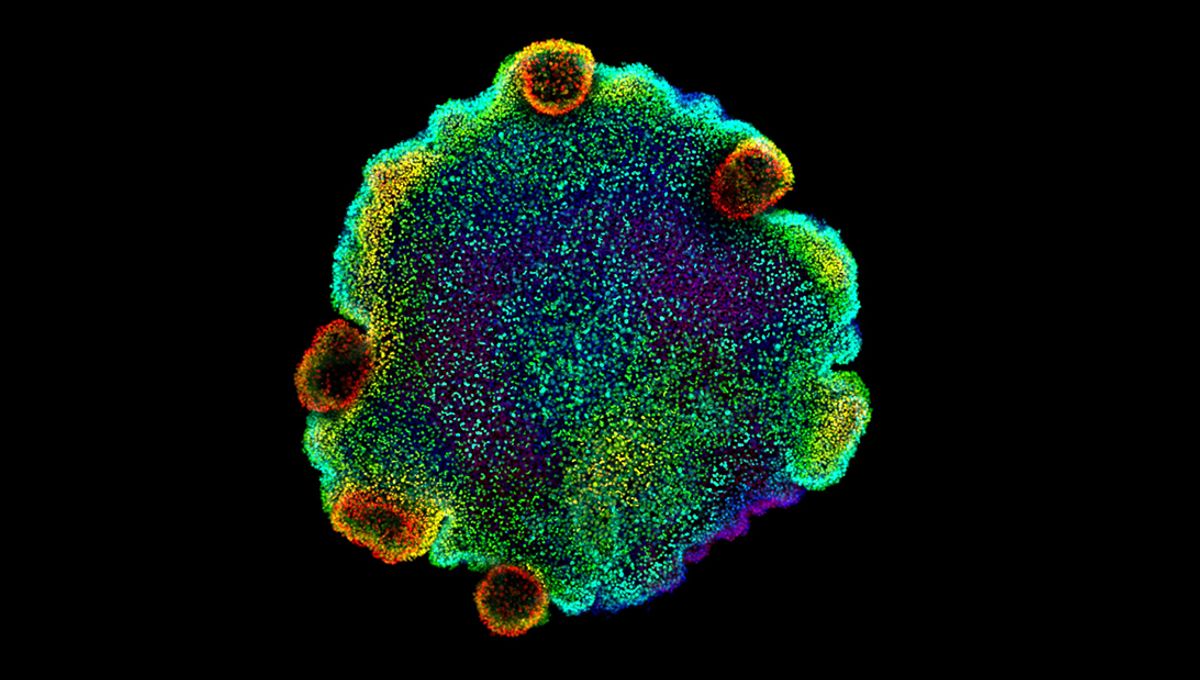
Tiny blob-like sea creatures could hold the keys to the origins of our nervous systems. A new study put placozoans under the microscope – literally – and discovered that they contain cells that look a little bit like our neurons, something scientists haven’t seen before this far back in evolutionary time.
Placozoans have been around for about 800 million years, and as such they constitute one of the earliest groups of animals on the tree of life. They’re simple critters, with a pancake-esque blobby physique and no actual organs or body parts. Each one is only about the size of a grain of sand, and they live near rocks in the shallows of warm seas where they munch away on algae and microorganisms.
They may not have a complex nervous system, but placozoans do have ways of controlling their behavior. They rely on specialized peptidergic cells that release small protein fragments that coordinate actions like movement or feeding. A new study, led by a team from the Centre for Genomic Regulation in Barcelona, set out to learn more about these cells, and the evolution of these ancient creatures.
They started by creating cell atlases for each of the four known species of placozoan, overlaying these with maps of the DNA regions that regulate different groups of genes. This illustrates how groups of cells with different functions interact with one another. By comparing these maps across the different species, and more widely with other early animal ancestors like comb jellies and sponges, researchers can get a sense of how these different cell types evolved.
Fourteen different types of peptidergic cells were discovered, and they appeared to be different from all the other cell types – there were no interconnecting cells between them, and they showed no signs of growth or cell division.
What the researchers did find, however, was that the peptidergic cells bore a striking resemblance to another cell type that didn’t evolve in animals until millions of years after placozoans emerged on Earth: neurons.
“We were astounded by the parallels,” said co-first author Dr Sebastián R. Najle in a statement. “The placozoan peptidergic cells have many similarities to primitive neuronal cells, even if they aren’t quite there yet. It’s like looking at an evolutionary stepping stone.”
The peptidergic cells start life in a similar way to how neurons develop, differentiating out from a population of progenitor cells. They have all the genetic machinery needed to build a kind of rudimentary synapse – or, at least, half a synapse. While our synapses are the junctions at which neurons meet and exchange chemical information to propagate nerve impulses, the placozoan cells only seem able to form the “sending” end of the synapse, and not the crucial receiving end.
They also can’t conduct electricity, which is essential for the function of nervous systems like ours.
But they do have a form of intercellular communication via chemical messengers called neuropeptides – not a million miles away from our neurotransmitters.
Bringing all these observations together, it seems as though the earliest beginnings of neurons were forming 800 million years ago. That’s 150 million years before the first modern neuron, as far as we know. But as co-first author Dr Xavier Garu-Bové explained, this discovery is really just the beginning of a much bigger puzzle, involving many other unassuming animal species that researchers might have been tempted to overlook until now.
“Placozoans lack neurons, but we’ve now found striking molecular similarities with our neural cells. Ctenophores have neural nets, with key differences and similarities with our own. Did neurons evolve once and then diverge, or more than once, in parallel? Are they a mosaic, where each piece has a different origin?”
“These are open questions that remain to be addressed.”
The study is published in the journal Cell.
Source Link: How Tiny Sea Creatures Can Teach Us About The Evolution Of The Human Brain